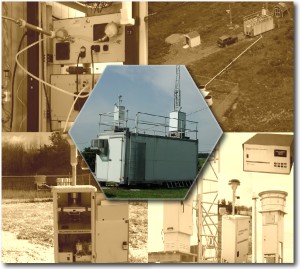
Maryland currently operates 24 air monitoring sites around the state and measures ground-level concentrations of
criteria pollutants, air toxics, meteorology, visibility, and other research-oriented measurements. Click
here to see a map of the current ambient air monitoring network. The Department of the Environment makes a concerted effort to closely participate in the latest air pollution research in order to ensure the Department's policies reflect the current state of the science.
Maryland uses a variety of monitoring techniques to address interstate pollutants traveling on prevailing winds into Maryland from surrounding states and regions. Such transported pollutants contribute up to approximately 70% of pollutant levels in Maryland during bad air quality episodes. At times, transported pollution arriving in Maryland outweighs local emissions as the dominant contributor to Maryland's continued non-attainment status for the National Ambient Air Quality Standards (NAAQS) for ground-level ozone. On other occasions, depending on the weather, both transport and "home grown" pollution are equally important in Maryland's worst air pollution days.
The consequences of transported pollution are significant. Many people come to Maryland to enjoy the natural beauty of the state's mountains, the Chesapeake Bay, beaches, and parks. Hazy skies caused by transported pollution detract from the region’s appeal and cut into the economy and quality of life. Maryland is proud to take the leadership role in addressing this key issue of regional interstate pollutant transport by using innovative measurement techniques to investigate this regional problem.
More on the Air Monitoring Network